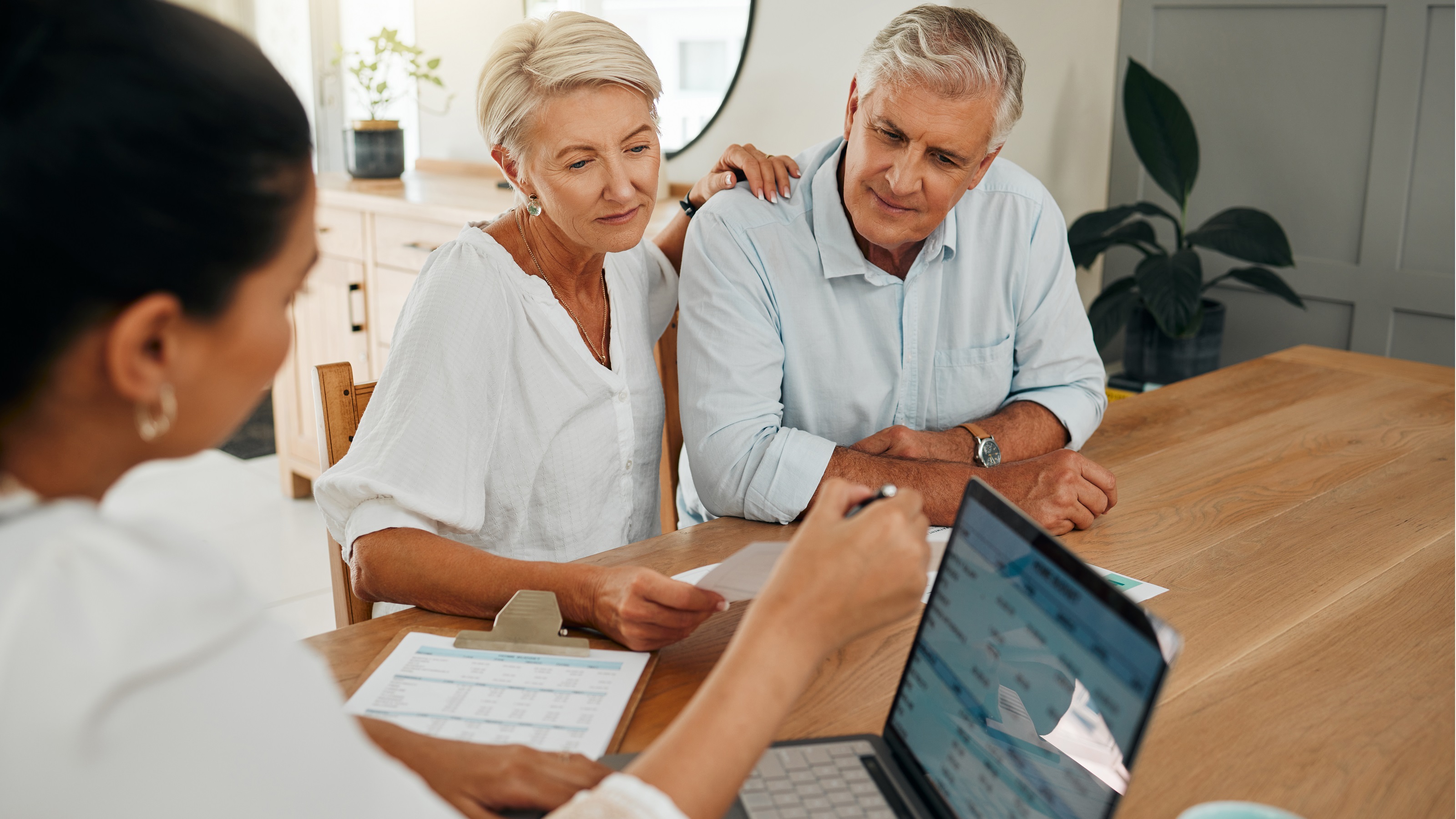Dividends in Overdrive
Companies such as Ford Motor and Quest Diagnostics are experiencing strong dividend growth thanks to a few factors.

Ford Motor, widely acclaimed for surviving the Great Recession sans aid from Uncle Sam, added an exclamation point to its run of prosperity when it recently hoisted its quarterly dividend from 5 cents per share to 10 cents. That may seem like small change, but to dividend hunters, it's a double. And to holders of Ford's 3.8 billion common shares, it's an additional $190 million in cash disbursements every quarter.
SEE OUR SLIDE SHOW: 12 Stocks to Get Dividends Every Month
Ford is on a roll. After 11 straight quarters of positive cash flow, it has $35 billion in cash and marketable securities. Receivables (such as payments that car buyers owe Ford's finance arm) offset much of Ford's debt, leaving the company with $10 billion in net cash. The 10 cent dividend is just 25% of the 40 cents per share Ford earned in the fourth quarter. That's below the average payout rate (dividends divided by earnings) of 30% for blue-chip companies that distribute cash. Ford can surely afford to raise its payout again in 2014 and beyond.
Many other companies are also boosting their dividends at a feverish pace. That's good news for investors. Buying a package of these dividend accelerators, as I call them, is a terrific strategy. Watch the dividends grow, and in all likelihood you’ll be richly rewarded over time. Dividend accelerators crop up in every sector, from retailing to technology. I studied some of these cases to see whether they have enough in common to put you on the trail of other potential accelerators. It turns out that there are at least three varieties:

Sign up for Kiplinger’s Free E-Newsletters
Profit and prosper with the best of expert advice on investing, taxes, retirement, personal finance and more - straight to your e-mail.
Profit and prosper with the best of expert advice - straight to your e-mail.
Cost-cutters. It's possible to fatten dividends by greatly improving a business's profitability. Quest Diagnostics (symbol DGX, $58), a chain of medical labs, paid 10 cents a quarter in 2011, raised its dividend to 17 cents last year and went to 30 cents in 2013 (share prices are as of January 31). Quest's mantra is to deliver "meaningful" dividend growth, and, juiced by an ongoing program that aims to chop annual expenses by $500 million (the equivalent of $3.16 per share) in 2014, the company should be able to do just that. Quest's goal hinges in part on whether tens of millions of newly insured Americans will take enough tests to hike the profit margin on each analysis. If so, Quest could easily double its current dividend rate.
Crowd followers. In explaining why its dividend shot up from 6 cents twice a year in 2010 to 50 cents a quarter now, Agrium (AGU, $113) said that one reason was that it wants its shares to yield as much as its fertilizer-industry rivals, such as Potash Corp. of Saskatchewan (POT). Because Agrium's stock has been rising steadily, its current yield is just 1.8%. But it won't stay that low, and your yield on the current cost will sprout as the company boosts its distribution.
A lot of cash, low payout ratio. The energy business in the U.S. is booming, and Helmerich & Payne (HP, $64), which owns and operates drilling rigs, is a major beneficiary. In the first quarter of 2013, H&P raised its quarterly dividend 114%, from 7 cents to 15 cents per share. Even so, H&P yields less than 1% and pays out just 10% of its earnings. So it's hardly a stretch to predict that H&P will increase its dividend significantly if it continues to prosper in the drilling game.
Other accelerators include Equifax (EFX, $59, 1.2% yield), a provider of credit reports; KBR Inc. (KBR, $31, 1.0%), the global construction company; and clothes-maker Ralph Lauren (RL, $166, 1.0%). I'm not immodest enough to think that I can divine the next dividend dreamboats. But there are clues: great cash flow, low debt, a growing business, bosses who talk about dividend growth to analysts and stockholders, and a below-average current yield and payout ratio. That combination offers more scope for dividend growth than, say, a Kimberly-Clark (KMB), which yields 3.3% and already disburses 67% of its earnings.
Jeff Kosnett is a senior editor at Kiplinger's Personal Finance.
Get Kiplinger Today newsletter — free
Profit and prosper with the best of Kiplinger's advice on investing, taxes, retirement, personal finance and much more. Delivered daily. Enter your email in the box and click Sign Me Up.

-
 Verizon’s Free iPhone Deal: What to Know Before You Switch or Upgrade
Verizon’s Free iPhone Deal: What to Know Before You Switch or UpgradeVerizon is offering a free smartphone — including the latest iPhones — with any myPlan, plus a three-year price lock. But is it really the best deal for you?
By Choncé Maddox
-
 Married? Five Ways to Ensure Your Estate Plans Work in Tandem
Married? Five Ways to Ensure Your Estate Plans Work in TandemGetting on the same page now means fewer potential problems when it counts.
By Kiplinger Advisor Collective
-
 Dividends Are in a Rut
Dividends Are in a RutDividends may be going through a rough patch, but income investors should exercise patience.
By Jeffrey R. Kosnett
-
 Why Investors Needn't Worry About U.S. Credit Downgrade
Why Investors Needn't Worry About U.S. Credit DowngradeFitch Ratings The United States saw its credit rating downgraded for just the second time in history, but experts aren't worried about the long-term damage to stocks.
By Dan Burrows
-
 Municipal Bonds Stand Firm
Municipal Bonds Stand FirmIf you have the cash to invest, municipal bonds are a worthy alternative to CDs or Treasuries – even as they stare down credit-market Armageddon.
By Jeffrey R. Kosnett
-
 High Yields From High-Rate Lenders
High Yields From High-Rate LendersInvestors seeking out high yields can find them in high-rate lenders, non-bank lenders and a few financial REITs.
By Jeffrey R. Kosnett
-
 Time to Consider Foreign Bonds
Time to Consider Foreign BondsIn 2023, foreign bonds deserve a place on the fringes of a total-return-oriented fixed-income portfolio.
By Jeffrey R. Kosnett
-
 The 5 Safest Vanguard Funds to Own in a Volatile Market
The 5 Safest Vanguard Funds to Own in a Volatile Marketrecession The safest Vanguard funds can help prepare investors for continued market tumult, but without high fees.
By Kyle Woodley
-
 5 of the Best Preferred Stock ETFs for High and Stable Dividends
5 of the Best Preferred Stock ETFs for High and Stable DividendsETFs The best preferred stock ETFs allow you to reduce your risk by investing in baskets of preferred stocks.
By Kyle Woodley
-
 The Current I-Bond Rate Until May Is Mildly Attractive. Here's Why.
The Current I-Bond Rate Until May Is Mildly Attractive. Here's Why.Investing for Income The current I-bond rate is active until November 2024 and presents an attractive value, if not as attractive as in the recent past.
By David Muhlbaum